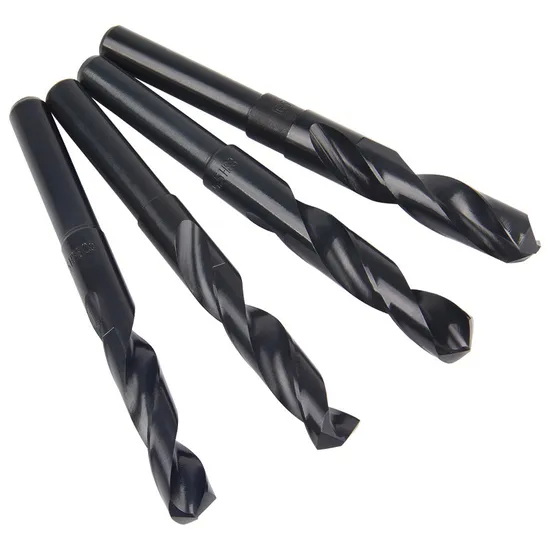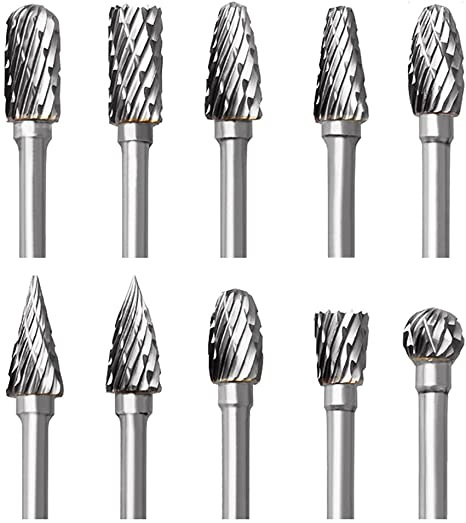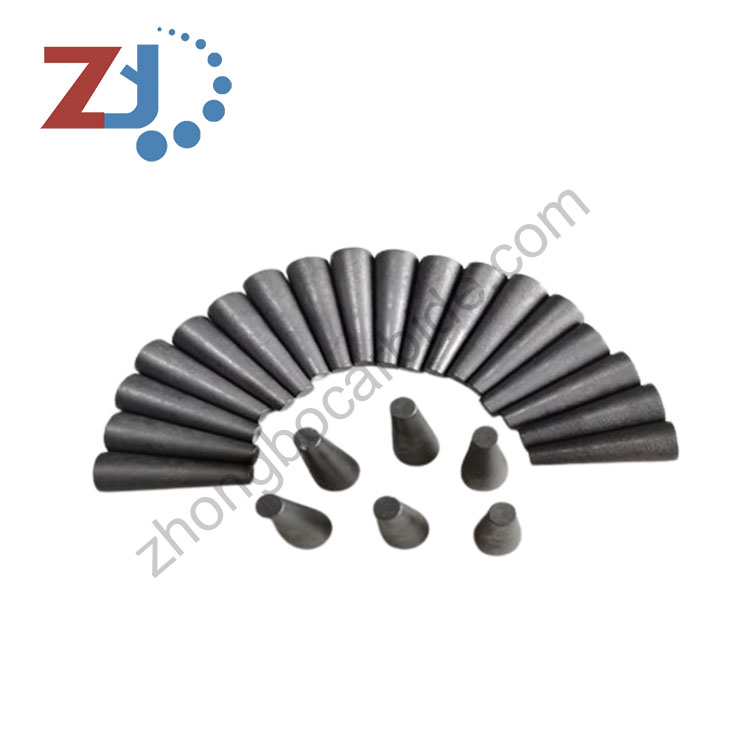Content Menu
● Introduction
● The Origins of Linde Air Products
>> Carl von Linde's Vision
>> Establishing a U.S. Presence
● The Birth and Growth of Union Carbide
>> Early Foundations
>> The Push for Chemical Innovation
● The 1917 Merger: How Linde Air Products Became Part of Union Carbide
>> World War I and the Seizure of Assets
>> Formation of Union Carbide and Carbon Corporation
>> Synergy and Interdependence
● Industrial Impact: Welding, Metallurgy, and Petrochemicals
>> Welding and Metalworking
>> Petrochemical Pioneering
>> Metallurgy and Carbon Products
● Linde Air Products and the Manhattan Project
>> Uranium Processing and the Atomic Age
>> Industrial Legacy and Environmental Remediation
● The Evolution: From Union Carbide to Praxair and Back to Linde
>> Spinoff and the Birth of Praxair
>> Global Expansion and Reunification
>> Brand and Market Leadership
● Additional Contributions to Industrial Innovation
>> Advances in Cryogenics and Medical Applications
>> Environmental Initiatives and Sustainability Efforts
>> Global Expansion and Market Influence
● Legacy and Modern Relevance
>> Technological Impact
>> Industrial and Environmental Challenges
>> Corporate Evolution
● Conclusion
● FAQ: Linde Air Products and Union Carbide
>> 1. What led to the merger of Linde Air Products with Union Carbide?
>> 2. How did Linde Air Products contribute to the Manhattan Project?
>> 3. What products and technologies resulted from the Linde Air Products and Union Carbide partnership?
>> 4. What happened to Linde Air Products after its time with Union Carbide?
>> 5. What is the modern legacy of Linde Air Products and Union Carbide?
● Citations:
Introduction
The industrial gases and chemical industries have been shaped by a handful of pioneering companies whose innovations and strategic decisions have had lasting impacts on global technology, industry, and even world history. Among these, Linde Air Products and Union Carbide stand out for their intertwined legacies—a relationship that began in the early 20th century and has continued to influence the sector for over a century.
This article explores the origins, evolution, and enduring significance of the connection between Linde Air Products and Union Carbide. We will trace their histories, examine the pivotal moments that brought them together, and analyze how their combined expertise propelled advances in industrial gases, petrochemicals, metallurgy, and even the Manhattan Project. Along the way, we'll use historical photographs, diagrams, and infographics to illustrate key developments.

The Origins of Linde Air Products
Carl von Linde's Vision
The story begins with Carl von Linde, a German engineer and inventor who revolutionized refrigeration technology in the late 19th century. In 1879, he founded *Gesellschaft für Linde's Eismaschinen Aktiengesellschaft* to commercialize his refrigeration systems, primarily for the brewing and food industries. His relentless pursuit of lower temperatures led to the liquefaction of air and the development of air separation technologies.
Establishing a U.S. Presence
In 1907, recognizing the vast industrial potential of the United States, Carl von Linde established Linde Air Products in Buffalo, New York. The company quickly became a leader in producing liquid oxygen, acetylene, nitrogen, and xenon, serving a rapidly industrializing American market.
The Birth and Growth of Union Carbide
Early Foundations
Union Carbide traces its origins to the late 19th century, with the Union Carbide Company (founded in 1898) and the National Carbon Company (founded in 1886). These companies specialized in calcium carbide, carbon electrodes, and acetylene gas—essential products for welding, lighting, and chemical manufacturing.
The Push for Chemical Innovation
By the early 20th century, Union Carbide was expanding into new chemical frontiers, including ethylene and other petrochemicals. The company's research in Clendenin, West Virginia, led to groundbreaking advances in ethylene production and the birth of the modern petrochemical industry.
The 1917 Merger: How Linde Air Products Became Part of Union Carbide
World War I and the Seizure of Assets
The outbreak of World War I dramatically altered the landscape for German-owned businesses in the United States. In 1917, under the Trading with the Enemy Act, the U.S. government confiscated the American assets of German companies, including Linde Air Products.
Formation of Union Carbide and Carbon Corporation
The seized Linde Air Products was merged with Union Carbide Company, National Carbon Company, and Prest-O-Lite to form the Union Carbide and Carbon Corporation in 1917. This new conglomerate brought together expertise in industrial gases, acetylene, carbon products, and more, creating one of the most powerful chemical and industrial gas companies in the world.
Synergy and Interdependence
The merger was not merely administrative. The products and processes of these companies were highly interdependent:
- Calcium carbide was used to produce acetylene gas.
- Acetylene gas and oxygen (from Linde Air Products) were combined for oxyacetylene welding and cutting.
- Carbon electrodes were essential for producing calcium carbide and other high-temperature processes.
Industrial Impact: Welding, Metallurgy, and Petrochemicals
Welding and Metalworking
The combination of acetylene (Prest-O-Lite) and oxygen (Linde Air Products) enabled the widespread adoption of oxyacetylene welding and cutting, a transformative technology for manufacturing, construction, and shipbuilding. Union Carbide became a dominant supplier of welding equipment and industrial gases in the Western Hemisphere.
Petrochemical Pioneering
Union Carbide's Clendenin plant, leveraging expertise from the Linde laboratory in Buffalo, became the first U.S. facility to produce ethylene on an industrial scale. This innovation laid the foundation for the modern petrochemical industry, enabling the production of plastics, solvents, and synthetic materials that revolutionized countless industries.
Metallurgy and Carbon Products
Union Carbide's carbon products division supplied electrodes, furnace linings, and cathode blocks essential for steelmaking, aluminum production, and other metallurgical processes. Many of these relied on high-purity gases and materials developed by Linde Air Products.

Linde Air Products and the Manhattan Project
Uranium Processing and the Atomic Age
During World War II, the Linde Air Products Division of Union Carbide played a crucial role in the Manhattan Project. From 1942 to 1946, the Linde ceramics plant in Tonawanda, New York, processed uranium ores under contract to the Manhattan Engineer District. The plant developed and refined methods for extracting uranium, contributing directly to the U.S. atomic bomb program.
Industrial Legacy and Environmental Remediation
After the war, the Linde facilities underwent extensive cleanup to remove radioactive contamination. By 2015, nearly 400,000 tons of contaminated material had been excavated and disposed of, allowing the site to be repurposed for commercial and industrial uses.
The Evolution: From Union Carbide to Praxair and Back to Linde
Spinoff and the Birth of Praxair
For decades, the industrial gases division of Union Carbide operated under the Linde name in the U.S. In 1992, Union Carbide spun off this division as Union Carbide Industrial Gases Inc., which was soon renamed Praxair.
Global Expansion and Reunification
Praxair grew rapidly, acquiring other gases businesses and expanding internationally. In a remarkable twist of corporate history, Praxair and Linde AG—the original German parent—merged in 2018 to form Linde plc, reuniting the American and European branches after a century of separation.
Brand and Market Leadership
Today, Linde plc is the world's largest industrial gases company, serving industries from metallurgy and energy to healthcare and electronics. The legacy of Linde Air Products and Union Carbide continues in every cylinder of oxygen, every petrochemical plant, and every innovation in industrial gas technology.
Additional Contributions to Industrial Innovation
Advances in Cryogenics and Medical Applications
Linde Air Products was instrumental in advancing cryogenic technologies beyond industrial gases. Their innovations enabled the development of medical oxygen systems, which have saved countless lives in hospitals worldwide. The ability to produce and store liquid oxygen efficiently revolutionized respiratory therapy and emergency medicine.
Environmental Initiatives and Sustainability Efforts
Both Linde Air Products and Union Carbide have faced environmental challenges but have also pioneered sustainability initiatives. Linde plc, the successor company, invests heavily in carbon capture technologies and green hydrogen production, aiming to reduce the carbon footprint of industrial gas production.
Global Expansion and Market Influence
The global reach of Linde and Union Carbide's technologies has influenced markets across Asia, Europe, and the Americas. Their products support critical infrastructure, including water treatment, food preservation, and semiconductor manufacturing.
Legacy and Modern Relevance
Technological Impact
- Air separation and gas liquefaction: Technologies pioneered by Linde Air Products remain foundational for producing oxygen, nitrogen, and argon at industrial scale.
- Petrochemical synthesis: Union Carbide's early work in ethylene and derivatives underpins the global plastics and synthetic materials industries.
- Welding and metal fabrication: The oxyacetylene process revolutionized manufacturing and construction worldwide.
Industrial and Environmental Challenges
- Asbestos and workplace safety: Both Linde Air Products and Union Carbide used asbestos-containing materials in their plants, leading to long-term health consequences for workers and ongoing litigation.
- Environmental remediation: Sites like the Linde ceramics plant required extensive cleanup due to radioactive contamination from wartime uranium processing.
Corporate Evolution
- The merger and re-merger of Linde and Praxair illustrates the cyclical nature of global industry, where technological heritage and market forces drive companies apart and bring them back together.
Conclusion
The connection between Linde Air Products and Union Carbide is a story of innovation, adaptation, and global impact. From their origins in refrigeration and carbide production to their roles in welding, petrochemicals, and even the atomic age, these companies shaped the industrial world as we know it. Their merger in 1917 created a powerhouse that drove technological progress for decades, and their eventual reunification as Linde plc ensures that their legacy will continue to influence the future of industry, science, and technology.

FAQ: Linde Air Products and Union Carbide
1. What led to the merger of Linde Air Products with Union Carbide?
The U.S. government confiscated the American assets of German-owned Linde Air Products during World War I under the Trading with the Enemy Act. These assets were merged with Union Carbide Company and other firms to form the Union Carbide and Carbon Corporation in 1917.
2. How did Linde Air Products contribute to the Manhattan Project?
The Linde Air Products Division of Union Carbide processed uranium ores at its ceramics plant in Tonawanda, New York, from 1942 to 1946. This work was part of the Manhattan Project, which developed the first atomic bombs.
3. What products and technologies resulted from the Linde Air Products and Union Carbide partnership?
Their partnership enabled advances in air separation, industrial gas production, oxyacetylene welding, petrochemical synthesis (especially ethylene derivatives), and uranium processing for nuclear energy and weapons.
4. What happened to Linde Air Products after its time with Union Carbide?
In 1992, Union Carbide spun off its industrial gases division as Praxair. In 2018, Praxair merged with Linde AG to form Linde plc, reuniting the American and European branches of the original Linde enterprise.
5. What is the modern legacy of Linde Air Products and Union Carbide?
Linde plc is now the world's largest industrial gases company, with a legacy spanning air separation, welding, petrochemicals, and environmental stewardship. Its technologies remain central to modern industry, and its history illustrates the evolution of global chemical and industrial gas markets.
Citations:
[1] https://en.wikipedia.org/wiki/Linde_plc
[2] http://preservationexchange.blogspot.com/2016/08/linde-air-products-extracting-oxygen.html
[3] https://www.acs.org/education/whatischemistry/landmarks/petrochemical-industry-birthplace.html
[4] https://www.lrd.usace.army.mil/Mission/Projects/Article/3612342/linde-site/
[5] https://www.bellucklaw.com/new-york-asbestos-companies/linde-air-products/
[6] https://en.wikipedia.org/wiki/Union_Carbide
[7] https://www.mesotheliomalawyercenter.org/asbestos/manufacturers/union-carbide/
[8] https://www.linde.com/about-us
[9] https://www.gasworld.com/story/praxair-and-linde-merger-discussions-what-this-could-mean-for-the-market/2081954.article/
[10] https://ota.ca.gov/wp-content/uploads/sites/54/2022/01/57-sbe-018.pdf
[11] https://www.bellucklaw.com/new-york-asbestos-companies/union-carbide/
[12] https://www.unioncarbide.com/history.html
[13] https://www.lrd.usace.army.mil/Missions/Projects/Display/Article/3612342/linde-site/
[14] https://www.firstsuperspeedway.com/sites/default/files/Prest-O-Lite.pdf
[15] https://en.wikipedia.org/wiki/Carl_von_Linde
[16] http://www.wsj.com/articles/praxair-holds-merger-discussions-with-germanys-linde-1471299820
[17] https://investors.airproducts.com/static-files/e2f03ab7-63bc-48c7-9624-af27051f8b37
[18] https://www.bellucklaw.com/new-york-asbestos-companies/linde-air-products/
[19] https://www.acs.org/education/whatischemistry/landmarks/petrochemical-industry-birthplace.html
[20] https://www.huffpost.com/entry/gas-pains-what-the-proposed-linde-praxair-merger-tells_b_591f404be4b07617ae4cbbc5
[21] https://en.wikipedia.org/wiki/James_A._Rafferty
[22] https://www.lrd.usace.army.mil/Missions/Projects/Article/3612342/linde-site/
[23] https://www.carbidecamps.net/UCC%20Articles/HistoryOfUCC/History%20of%20UCC%20-%20complete%20-%20single%20file.pdf
[24] https://www.alamy.com/stock-photo/union-carbide-company.html
[25] https://digitalcollections.syr.edu/Documents/Detail/union-carbide-co./287508
[26] http://www.wsj.com/articles/praxair-linde-to-merge-into-67-billion-industrial-gas-firm-1482237617
[27] https://www.alamy.com/stock-photo/union-carbide.html?page=4
[28] https://www.gasworld.com/story/praxair-and-linde-merger-discussions-what-this-could-mean-for-the-market/2081954.article/
[29] https://www.alamy.com/stock-photo/linde-air.html
[30] https://lipsitzponterio.com/asbestos-job-site/linde-air-products-chandler-street-plant/
[31] https://www.wsj.com/articles/praxair-holds-merger-discussions-with-germanys-linde-1471299820?mod=article_inline
[32] https://en.wikipedia.org/wiki/Linde_plc
[33] https://www.omnia.ie/index.php?navigation_function=3&europeana_query=union+carbide
[34] https://www.britannica.com/money/Union-Carbide-Corporation
[35] https://refreshingairproducts.com/the-case-for-change/
[36] https://www.gardnerweb.com/news/linde-praxair-to-merge
[37] https://carbidecamps.net/UCC%20Articles/HistoryOfUCC/CH3-4%5B1of2%5Docr.pdf
[38] https://www.nj.gov/dep/passaicdocs/docs/3rd-PartyComplaintNexusPackages/3rd-PartyComplaintB-2Nexus/PraxairSite.pdf
[39] https://handwiki.org/wiki/Company:The_Linde_Group
[40] https://www.cbc.ca/news/business/compressed-gas-companies-to-merge-into-industrial-giant-1.598694
[41] https://www.gasworld.com/story/praxair-linde-then-and-now/2086139.article/
[42] https://www.lindeus.com
[43] https://refreshingairproducts.com/wp-content/uploads/2024/12/Refreshing-Air-Products.pdf
[44] https://en.wikipedia.org/wiki/Union_Carbide
[45] https://www.linde.com/about-us
[46] https://eur-lex.europa.eu/legal-content/EN/TXT/HTML/?uri=CELEX%3A32003D0207&from=ES
















